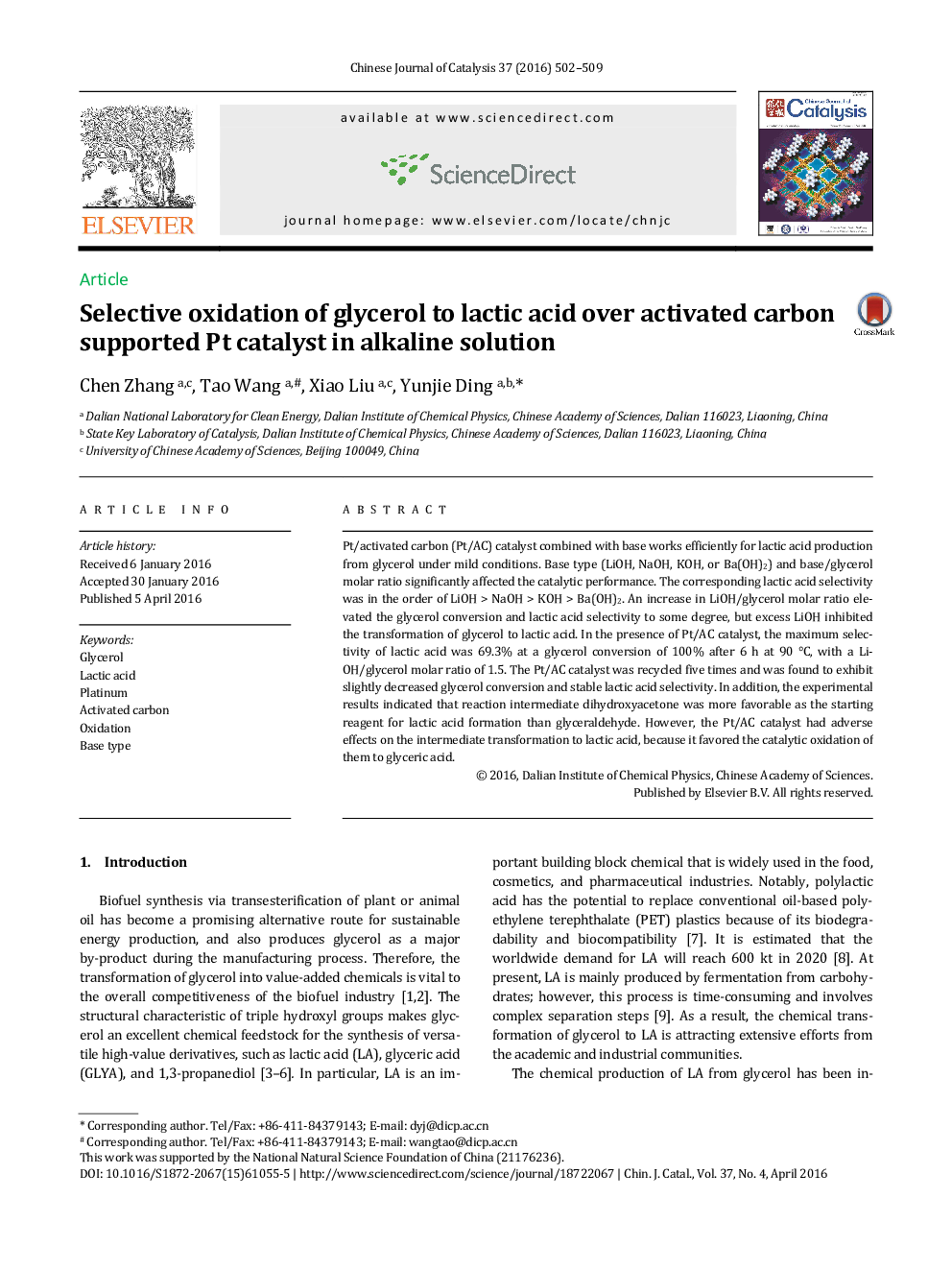| Article ID | Journal | Published Year | Pages | File Type |
|---|---|---|---|---|
| 59146 | Chinese Journal of Catalysis | 2016 | 8 Pages |
Pt/activated carbon (Pt/AC) catalyst combined with base works efficiently for lactic acid production from glycerol under mild conditions. Base type (LiOH, NaOH, KOH, or Ba(OH)2) and base/glycerol molar ratio significantly affected the catalytic performance. The corresponding lactic acid selectivity was in the order of LiOH > NaOH > KOH > Ba(OH)2. An increase in LiOH/glycerol molar ratio elevated the glycerol conversion and lactic acid selectivity to some degree, but excess LiOH inhibited the transformation of glycerol to lactic acid. In the presence of Pt/AC catalyst, the maximum selectivity of lactic acid was 69.3% at a glycerol conversion of 100% after 6 h at 90 °C, with a LiOH/glycerol molar ratio of 1.5. The Pt/AC catalyst was recycled five times and was found to exhibit slightly decreased glycerol conversion and stable lactic acid selectivity. In addition, the experimental results indicated that reaction intermediate dihydroxyacetone was more favorable as the starting reagent for lactic acid formation than glyceraldehyde. However, the Pt/AC catalyst had adverse effects on the intermediate transformation to lactic acid, because it favored the catalytic oxidation of them to glyceric acid.
Graphical AbstractPt/activated carbon catalyst works efficiently for lactic acid production from glycerol under mild conditions. Different alkalis greatly influence both glycerol conversion and lactic acid selectivity, among which LiOH is optimal.Figure optionsDownload full-size imageDownload as PowerPoint slide
